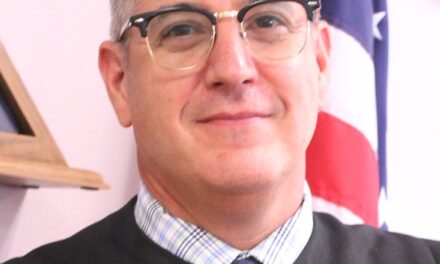Question: I have a very large mulberry tree that offers great shade on the west side of my house in the summer. There is a thick area of branches hanging over the driveway. Does a mulberry tree this size need to be cut back now or in the future for its health or safety? — S. White, Doña Ana County
Answer: I’m so glad you’re asking this question. I, too, had a huge non-fruiting mulberry in my yard when I lived in Las Cruces, and I remember wondering the same thing.

Marisa Y. Thompson, Ph.D
At the time, we opted to trim the few branches that were touching the roof (and low enough to reach without a ladder). While our decision was largely based on having a limited budget, it turned out to be the right decision for the tree — and our precious shade.
I’m inclined to suggest waiting until the tree fully leafs out this spring to focus on whether or not there is any branch dieback and then decide if the deadwood should be pruned out. Smaller, dead branches within the canopy may not become a problem. If larger limbs are dead, hiring a professional tree pruner to remove them safely will be the best option. While all pruning cuts injure trees, the larger the diameter of a cut limb, the more energy is required to seal the wound.
Take care not to “top” the tree by reducing size dramatically without regard to overall shape and branching structure. In addition to being detrimental to tree health, this practice has been proven to increase the chances of future limb breakage.
As noted in the 2001 International Society of Arboriculture (ISA) Arborists’ Certification Study Guide, severe topping “causes branch dieback, decay, and sprout production from the cut ends, resulting in a potentially hazardous situation once the sprouts become large and heavy. Topping or heading back is not a recommended pruning practice.”
In the late, great Dr. Alex L. Shigo’s super-helpful book, “Tree Pruning: A Worldwide Photo Guide,” topping is listed as one of seven major (and unfortunately common) pruning problems. “4. Topping and Tipping Large Trees. The practice causes serious injuries to large trees and leads to hazardous conditions. Do not plant trees under power lines. Or plant only small-maturing species. Or, start pruning when the trees are small.”
Check out this week’s blog post for the other six pruning no-no’s and a link to Dr. Ed Gilman’s short and snappy article, “Do Not Top Trees” at nmsudesertblooms.blogspot.com.
But hold on a minute. If we know topping is so bad for trees, why is it still common practice? Well, there are several factors.
For one, changing normalized behavior is difficult. When we see topped trees in our communities, we tend to think that must be the way it should be. Also, large tree pruning is hard. This line of work requires skill and is physically difficult — at times dangerous, and that’s why pruning services can be expensive. Selective, careful pruning also takes more time.
Furthermore, many of our urban trees were topped decades ago, and corrective pruning (aka crown restoration), while possible, usually requires multiple years of successive prunings.
For added insights on this mulberry query, I shared the details with my predecessor and mentor, Dr. Curtis Smith. Smith and I spoke on the phone while carefully reviewing each submitted photo. It can be difficult to identify deadwood in the winter when all the leaves are gone, even more so from a winter photo. We detected only a few smaller limbs that might be dead in the interior canopy. Overall, we agreed that the tree looks good and may not need major pruning.
As local ISA board certified master arborist and horticultural consultant Joran Viers pointed out, mulberry trees hold their branches strongly, unlike cottonwoods.
Program announcements
To register for an upcoming program, call the Valencia County Cooperative Extension Service at 505-565-3002. For more information, visit valenciaextension.nmsu.edu.
- Ready, Set, GROW! Free gardening classes are being offered virtually, please visit the link for more information at valenciaextension.nmsu.edu.
(If you are an individual with a disability who requires auxiliary aid or service to participate in a program, please contact the Valencia County Cooperative Extension Service Office at 505-565-3002 two weeks in advance of the event.)
(Marisa Y. Thompson, Ph.D., is the extension horticulture specialist in the Department of Extension Plant Sciences at the New Mexico State University Los Lunas Agricultural Science Center.)
















